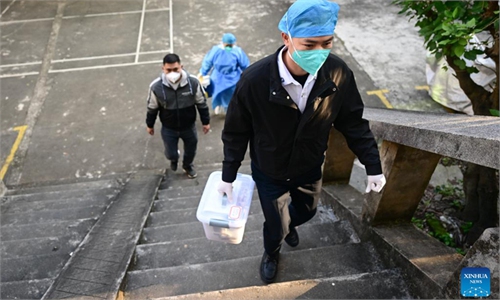
Long lines are seen back at a train station in Jinan, East China's Shandong Province, on December 7, 2022, as China further optimized COVID response and relaxed controls. Photo: IC
Some Chinese cities have undergone or are undergoing the first wave of peak infections. So far, there is no widespread death in the country and China is doing the best to protect health and lives of the public, said Liang Wannian, head of the expert panel overseeing the national Covid-19 response.
"We should hold firm confidence and do our best to protect individuals' health and lives. Confidence is important. The domestic [epidemic] situation shows that some Chinese cities have passed or are passing the first wave of peak infections but there is no presence of frightening widespread death. It tells us to have confidence," Liang told China Central Television in elaborating the country's decision to downgrade management of COVID-19 from Class A to Class B should not be regarded as "laissez-faire."
Liang continued, "I have felt Chinese people are facing up the epidemic together with the government and those governmental departments, together addressing the upsurge and spread of the epidemic."
To prevent severe cases and deaths, the country has made significant effort to allocate available resources including the expansion of ICU beds, and reserves of anti-viral drugs in medical institutions at all levels.
The China's CDC now has replaced National Health Commission (NHC) in updating COVID-19 case data, in a move experts believed will help shift more resources to other key areas like clinical treatment.
New data released by the Chinese Center for Disease Control and Prevention (China's CDC) on Tuesday showed the country reported one death in Southwest China's Sichuan Province. The report by the China's CDC also showed the country registered 227 severe cases on Monday.
In light of policy shift, health authorities are now required to shift focus toward monitoring of severe COVID-19 cases and deaths. A new national guidance on epidemic monitoring showed that medical institutions at all levels now are required to analyze clinical cases, especially trends linked to severe cases and deaths.
Medical institutions must issue diagnostic reports on severe cases and deaths, which clearly state their date of discharge, date and causes of deaths, the guidance notes.
Global Times



